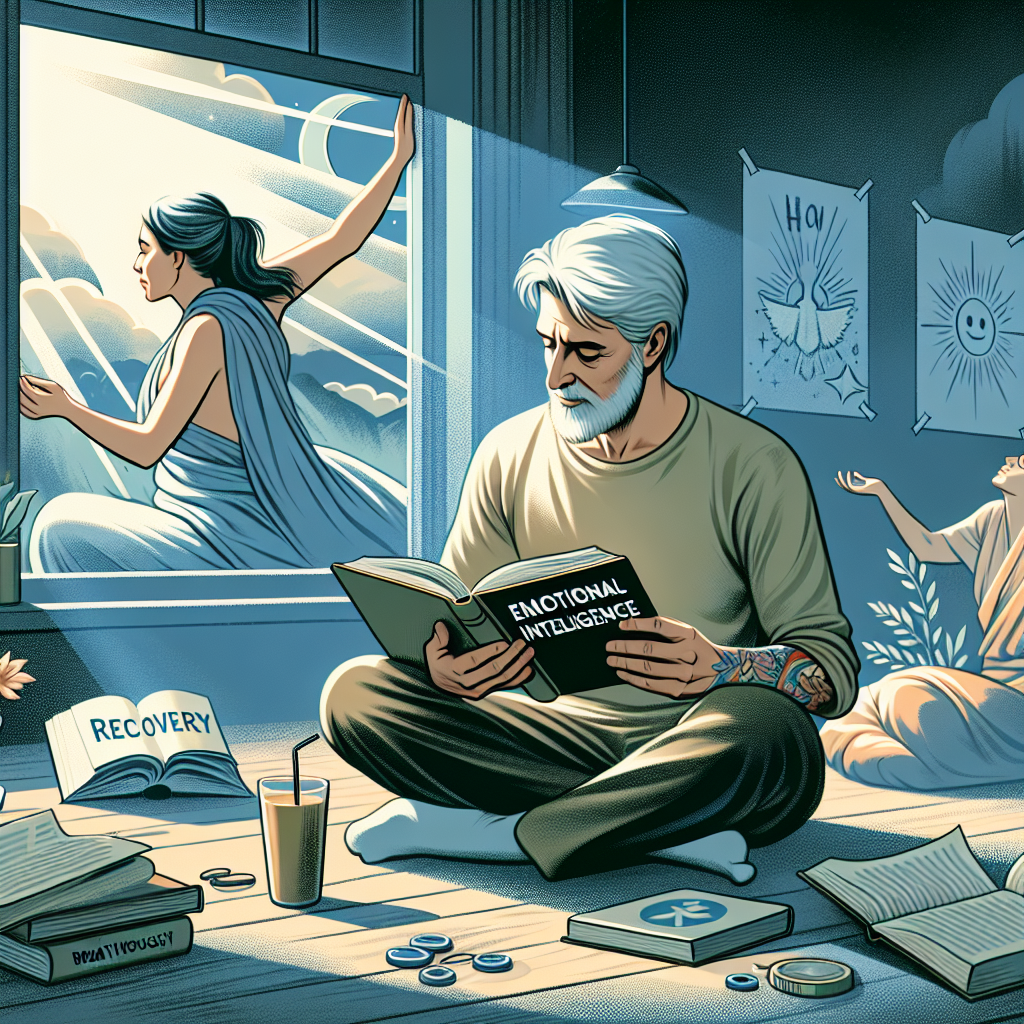Addiction wears many disguises. Some destroy lives quickly and visibly, alcohol, cocaine, gambling, pills. Others hide behind approval and applause. They look like ambition, discipline, or self-improvement. They win awards, earn promotions, and collect followers. But beneath the success story, something darker is at work, compulsion disguised as drive.
These are the unseen addicts, the people who swapped substances for socially acceptable highs. The workaholic who can’t switch off. The gym addict chasing another hour, another calorie, another mirror fix. The entrepreneur who sleeps four hours a night and calls it “grind culture.”
Society doesn’t just overlook these addictions; it celebrates them. We worship productivity and perfection, forgetting that obsession, no matter how noble it looks, always demands a sacrifice.
When Addiction Gets a Makeover
We’re conditioned to think addiction means destruction. But what if it looks like success? What if it wears a tailored suit or a fitness tracker instead of a hangover? Modern addiction has learned how to camouflage. It doesn’t need substances anymore, it just needs the same neurological reward: dopamine. The brain doesn’t care whether that rush comes from a needle or a notification, a promotion or a protein shake. It just wants the next hit.
The problem is, society loves dopamine too. It rewards it with likes, salaries, and admiration. So instead of intervention, these addicts get applause. They’re called “driven,” “motivated,” “disciplined.” Nobody asks if they’re lonely. Nobody notices the emptiness that follows every achievement. That’s the cruel trick of socially sanctioned addiction, it hides in plain sight, behind words like “success” and “wellness.”
The High of Hustle
Work addiction is one of the most common invisible addictions today. It doesn’t look dangerous, it looks responsible. It’s easy to justify because it pays the bills, funds the holidays, and provides a sense of identity. But beneath the spreadsheets and late nights, it’s the same old pattern: escape. Workaholism isn’t about love for the job. It’s about fear, fear of failure, inadequacy, silence, or worthlessness. The addict replaces substances with achievement because achievement gives the same rush of validation. Every deadline met is a hit. Every promotion is a fix.
The withdrawal symptoms are just as real too: anxiety when resting, guilt during downtime, panic when productivity dips. The body might be clean, but the mind is still hooked, on control, on approval, on never feeling “enough.” Society calls it success. But for the person living it, it feels like running from a fire that never goes out.
Fitness, The Sanctified Obsession
Then there’s the fitness addict, the one who doesn’t skip a session, who tracks every calorie, who panics if the gym is closed. On the surface, it looks like health. Beneath it, it’s often self-punishment. Exercise can be healing, even life-saving. But when it becomes compulsive, when rest feels like failure, it turns into another drug. The endorphins mimic the highs of addiction, and the control over food and body image replaces the chaos once managed by substances.
Many people in recovery turn to fitness as a healthy outlet, and for a while, it works. But without self-awareness, it can become another form of escape, a way to regulate feelings by manipulating the body. You stop training for strength and start training to silence the noise in your head. You stop eating to nourish and start restricting to control. You chase numbers, reps, weight, macros, the way you once chased doses.
The tragedy is that society will praise you for it. “You’re so disciplined.” “You’re an inspiration.” But the truth is, you’re addicted, just to something that looks respectable.
The Digital Dopamine Loop
Modern addiction isn’t just physical, it’s digital. Phones, emails, and social media have created an endless feedback loop that hijacks the same brain circuits as drugs. The constant checking, refreshing, scrolling, it’s not boredom, it’s compulsion. The hustler mentality feeds off this. Every ping, every message, every new follower delivers a hit. The body releases dopamine, the same chemical rush that once came from using.
People spend hours online under the guise of “networking” or “branding.” But deep down, they’re chasing validation, trying to fill the same void they once numbed differently. The addiction just learned how to fit inside a phone screen. Digital addiction is one of the hardest to quit because it’s woven into survival. Work, communication, and social identity all depend on it. You can’t detox from your career or delete your entire life. But you can start asking why you need to check, what you’re afraid to feel in the silence between notifications.
The Fear Beneath the Hustle
Every addiction, visible or invisible, grows from the same soil: fear. Fear of insignificance, fear of stillness, fear of confronting the emotions buried underneath. Work addicts fear failure. Fitness addicts fear loss of control. Social media addicts fear invisibility.
These fears drive the behaviour, and the behaviour reinforces the fear. The harder you work, the more you avoid the question: who am I without my output? The more you train, the less you ask: what am I really running from? Addiction is never about the substance. It’s about the space the substance fills. Take away the drug, and something else will try to take its place. That’s why recovery isn’t just about quitting, it’s about understanding what made you need it in the first place.
The Cost of “High Performance”
We celebrate productivity like it’s a moral virtue. But the body doesn’t care how noble your addiction looks. Chronic stress, burnout, insomnia, anxiety, they don’t discriminate. The “high performer” is often the person breaking down quietly behind the scenes. Relationships crumble because work comes first. Joy disappears because rest feels dangerous. Health declines because self-care feels like weakness.
And still, they push harder, because slowing down would mean facing what’s been suppressed. The success story becomes a slow-motion collapse, hidden under layers of approval and applause. At some point, the high of achievement stops feeling good. It just feels necessary. That’s the line between passion and addiction, when you’re no longer doing it because you love it, but because you’re terrified of stopping.
When Recovery Looks Like Rest
The hardest thing for the unseen addict to do is stop. Not quit entirely, just pause. Take a breath without a task attached to it. Sit still without a purpose. Feel instead of fix. For someone addicted to motion, rest feels like withdrawal. It triggers anxiety, guilt, and a flood of emotions that productivity has kept buried. That’s why true recovery for the modern addict isn’t found in achievement, it’s found in stillness.
It’s learning that your worth isn’t earned. That silence doesn’t mean failure. That your value exists beyond what you produce, lift, or post. The first step is awareness, noticing when effort crosses into obsession, when discipline becomes punishment, when motivation morphs into fear. The second is boundaries, creating space for rest, joy, and relationships that don’t revolve around performance.
You don’t have to quit your job or cancel your gym membership. You just have to stop using them to avoid yourself.
Redefining Success
Society has taught us to measure worth by productivity, but recovery teaches a different truth: success without peace is still failure. Real success is balance. It’s being able to work hard without losing your health. It’s caring about fitness without obsessing over control. It’s living with passion but not panic.
The goal isn’t to be the best, it’s to be whole. It’s to build a life that includes rest, connection, creativity, and presence, the things addiction, of any kind, robs you of. When you start valuing balance over burnout, you stop chasing highs and start experiencing life as it is, imperfect, unpredictable, and deeply human.
The Courage to Be Average
In a world addicted to excellence, choosing to be average can feel like rebellion. But sometimes, average is healthy. It’s the space where life happens, the unremarkable, uncurated moments where you actually get to feel.
You don’t need to optimise every second of your day. You don’t need to transform your body into a billboard of discipline. You don’t need to prove your worth through work. What you need is connection, peace, and authenticity, the things that can’t be measured, marketed, or monetised. Because addiction, in any form, is about avoidance. And recovery, in any form, is about presence.
The Invisible Epidemic
We’re living in an age that rewards addiction, as long as it looks productive. The workaholic is praised, the fitness obsessive is admired, and the digital addict is envied. But underneath it all, people are burning out, breaking down, and wondering why success still feels so empty. The unseen addict doesn’t need another goal, they need permission to stop chasing. They need to know that rest isn’t laziness, that peace isn’t failure, that slowing down doesn’t mean giving up.
Because real strength isn’t found in the hustle. It’s found in the courage to rest, to feel, and to live without the constant need for the next high.
When you can sit in stillness and feel whole, without work, without fitness, without applause, that’s when you know you’re finally free.



